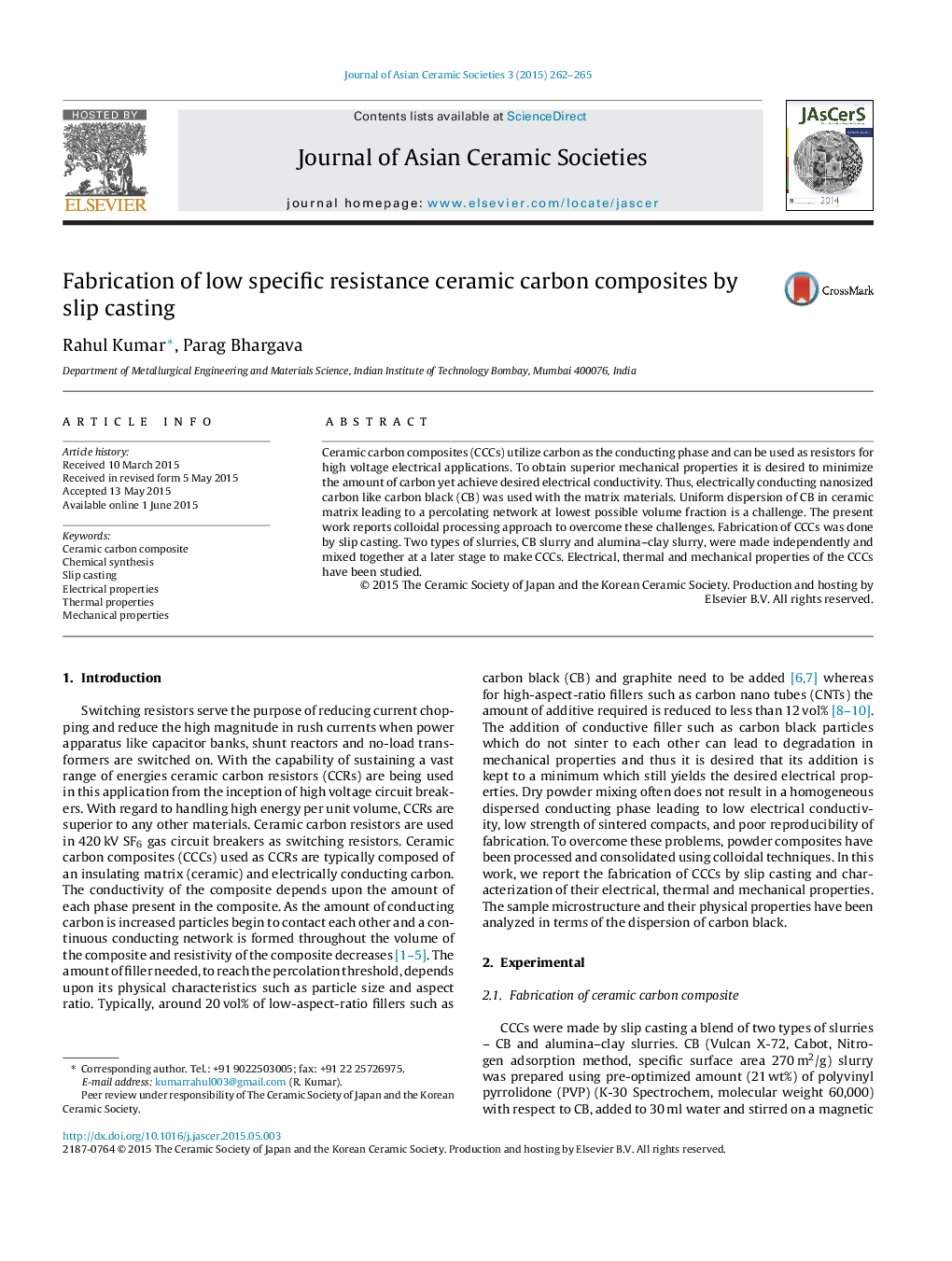| Article ID | Journal | Published Year | Pages | File Type |
|---|---|---|---|---|
| 1473265 | Journal of Asian Ceramic Societies | 2015 | 4 Pages |
Ceramic carbon composites (CCCs) utilize carbon as the conducting phase and can be used as resistors for high voltage electrical applications. To obtain superior mechanical properties it is desired to minimize the amount of carbon yet achieve desired electrical conductivity. Thus, electrically conducting nanosized carbon like carbon black (CB) was used with the matrix materials. Uniform dispersion of CB in ceramic matrix leading to a percolating network at lowest possible volume fraction is a challenge. The present work reports colloidal processing approach to overcome these challenges. Fabrication of CCCs was done by slip casting. Two types of slurries, CB slurry and alumina–clay slurry, were made independently and mixed together at a later stage to make CCCs. Electrical, thermal and mechanical properties of the CCCs have been studied.
